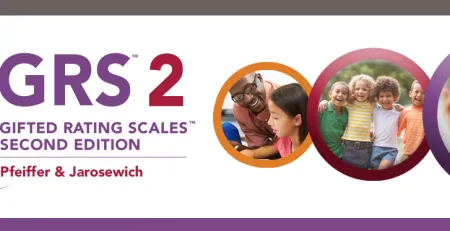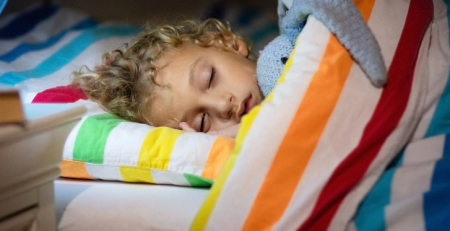The need to explore sleep problems with students who have ADHD
Impaired sleep includes difficulty falling or staying asleep, sleep disturbances (e.g., nightmare, sleepwalking), or feeling tired or fatigued during the daytime (Cortese et al., 2009; Kirov & Brand, 2014). Sleep-related impairments can certainly look like attention deficit hyperactivity disorder (ADHD) symptoms—for example, both can be associated with difficulty paying attention, restlessness, and impulsive decision-making. Because of this overlap, figuring out what is really beneath the surface can be difficult. Sleep problems can also exacerbate ADHD symptoms, amplifying their effects, and pose greater difficulty in daily functioning, which ultimately can make an accurate diagnosis more challenging. For instance, struggling to arrive at school on time could result from an ADHD-related difficulty with time management, a sleep-related issue of a late bedtime, or a combination of the two factors.
Disruptions to sleep can come from many sources—perhaps the stress of following the news in the past two years alone is enough to make one lose sleep—but the consequences are consistent. A limited quantity or low quality of sleep affects physical health (e.g., correlated with diabetes, obesity, hypertension, and heart problems; Simon, 2020), along with cognition (e.g., focus, emotion regulation), and mental health. The impairments associated with ADHD are further complicated by a lack of sleep, such as exacerbating executive dysfunction. Regardless, for students with ADHD, sleep problems are critical to explore, given their far-reaching effects.
How pervasive are these problems?
As the developer of leading tools for the assessment of ADHD, MHS conducted research to better understand the relationships between ADHD and sleep problems. Large, nationally representative samples from the general population were collected, along with targeted clinical samples of youth with an ADHD diagnosis when developing the Conners 4th Edition. The Conners 4TM captures parent, teacher, and self-reported ratings of youth (ages 6 to 18 years for parent and teacher; ages 8 to 18 years for self-report). The Conners 4 focuses on symptoms of ADHD and related impairments, as well as commonly co-occurring disorders to aid differential diagnosis. Additionally, items are included to screen for sleep problems.
Results of our studies confirmed that youth with ADHD report more problems with sleep than students in the general population. Parents of youth diagnosed with ADHD (N = 348) reported considerably higher rates of sleep problems than the parents of youth without any diagnoses (demographically matched general population sample of the same size). Difficulties staying or falling asleep were reported by parents for 10.37% of the general population sample, while 47.00% of parents of youth diagnosed with ADHD indicated these same difficulties. This dramatic difference means that youth with ADHD are more than 4 times as likely as youth without ADHD to experience sleep problems. Similarly, teachers were 3 times more likely to indicate that students with ADHD (N = 310) appeared tired during the school day than those from the general population. Students with ADHD were twice as likely as students from the general population to report sleep problems. These results, along with the growing body of evidence in the research literature, make it clear that ADHD measures must include content related to sleep problems.
What can we do to help?
Measure
- It is recommended practice that ADHD evaluations include screening for sleep problems. Standardized behavior rating scales, like the Conners 4, provide a great option for screening for sleep problems, especially with a multi-rater perspective. By using norm-referenced standardized tools, a student’s behaviors, actions, symptoms, thoughts, and feelings can be compared to others like them (e.g., same age). This comparison can help inform what is typical or concerning, relative to one’s peers or expected developmental trends.
- Additionally, targeted measures are available. The PROMIS® (Patient-Reported Outcomes Measurement Information System) Sleep Disturbance and Sleep-Related Impairment tools are freely available. The measures were developed based on years of research (Yu et al., 2011), with a grant from the National Institutes of Health (NIH). As an added convenience to Conners 4 users, the 8-item short-form versions of the PROMIS Sleep measures are available free of charge in the MHS Online Assessment Center+ (MAC+).
Observe
- Seek to educate parents and teachers to identify early indicators of struggle. For example, an adolescent who begins to take naps after school or falls asleep during class may be trying to cope with sleep problems during the night. Encouraging the student to keep a sleep log may help them observe their own patterns (Weiss & McBridge, 2018).
Build Better Habits
- For those struggling with sleep, often the best place to start is establishing healthy routines around sleep hygiene. Experts recommend keeping a consistent schedule or rhythm, even if it looks different than it has in the past—perhaps virtual school arrangements offer the chance to go to bed later and wake later, and if that suits an adolescent’s natural rhythm, it may make all the difference. Sticking with the same schedule, rather than initiating dramatic timing swings from weekdays to weekends, will help promote sufficient sleep. Getting some sunlight every day (usually 30 minutes is recommended) and incorporating some physical activity also improve sleep quality.
Learn More
- You may wish to consult experts, academic literature, and additional resources to learn more about recent findings and recommendations related to these topics. The Conners 4 will be available in early 2022.
Have questions? Get in touch with us.










